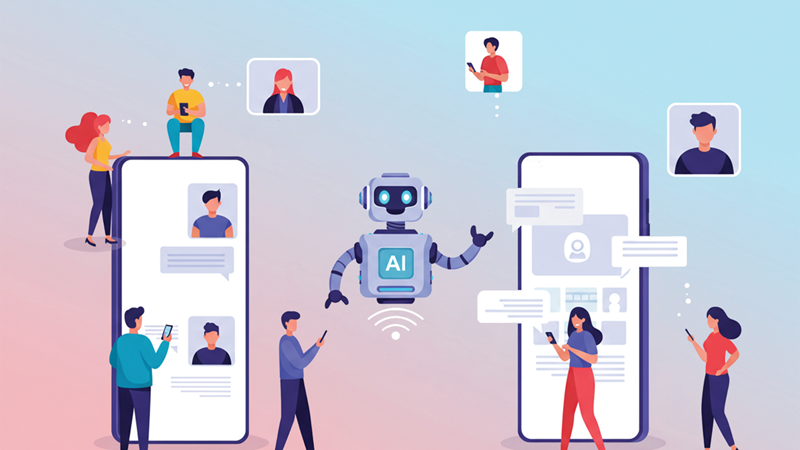From passive tools to proactive partners: What Google’s Gemini era means for modern marketers
When Google devotes its entire I/O keynote to AI, and not a single Pixel or Android announcement, it’s not just making a product statement. It’s signalling a shift in the way we’ll interact with technology going forward. And for marketers, that shift is already changing how we build, measure, and connect with audiences.
At Google I/O 2025, we saw the full arrival of the Gemini era: a vision where AI isn’t simply layered into existing tools, it redefines them. The question isn’t whether this will affect marketing; it’s how fast you’re ready to adapt.
Here are a few of the key takeaways from the announcements, and what they could mean for your marketing strategy moving forward.
1. Search is no longer a gateway, it’s an experience
Google’s rollout of AI Mode in Search is arguably its most impactful shift for marketers. We’ve moved past search as a static list of blue links. Instead, we now have a dynamic, multimodal assistant that understands nuance, handles complexity, and can even act on behalf of the user.
The integration of Deep Search, Search Live, and agentic checkout means consumers can explore, compare, and purchase, all without ever clicking through to a traditional webpage. If your product information, content, or brand signals aren’t designed to live inside these new AI experiences, you risk being invisible at the moment of intent.
2. The path to purchase just got a redesign
One of the more headline-grabbing features was the ability to upload a photo and try on clothing virtually, powered by Gemini and Google’s Shopping Graph. Add in automated price tracking and checkout, and suddenly we’re looking at a radically streamlined customer journey.
For marketers, this means two things:
- First, visual content becomes even more critical, not just for ads or product pages, but as input to these AI models.
- Second, brand storytelling needs to extend into these agentic workflows. It’s not enough to sell the product. You need to train the assistant to recommend it.
3. AI as your creative collaborator
Google’s unveiling of Flow, a generative video creation tool, signals how far we’ve come in just a year. You can now prompt Gemini to generate short cinematic scenes, stitch them together, and add dialogue, all without a single shoot or edit bay.
Combined with Veo 3 (for video) and Imagen 4 (for images), the message is clear: the creative process is becoming more agile. For product marketers, this isn’t about replacing your creative team, it’s about removing bottlenecks so ideas can move faster from concept to execution. The velocity of campaigns is about to change.
4. AI is not just in the cloud, it’s on your face
With the introduction of Android XR smart glasses (via partnerships with Samsung, Xreal, and others), Google is pushing AI beyond the screen. Wearables with built-in Gemini assistants will offer live translation, contextual navigation, and real-time object recognition.
It may feel like science fiction now, but think back to where mobile was 15 years ago. The moment users can interact with your brand in physical space, without reaching for a device, you’ll need a whole new layer of experience design.
5. Assistants that observe and act
Project Astra, another I/O highlight, brings visual intelligence into the real world. The AI assistant can now “see” through your phone camera and speak up with relevant observations, like pointing out a missed detail in a task or suggesting improvements based on context.
For customer support, product education, or even retail environments, this kind of proactive, camera-aware assistance changes the UX landscape. As marketers, we need to start thinking not just in terms of content delivery, but context recognition.
Final thoughts
This isn’t just about Google. It’s about a broader trend in which AI is moving from something users interact with to something that interacts with the world on their behalf. That changes the playing field for product marketing.
We’re used to building campaigns for audiences. But now, we may need to build for agents, AI systems that interpret, decide, and act before the human user even arrives. That means feeding them the right signals, context, and language.
The Gemini era isn’t coming. It’s already here. And if we want to remain visible, valuable, and relevant, we need to design for the interface beyond the screen.
Sources:
- Google I/O 2025 Keynote
- The Verge - Google I/O 2025 keynote in 32 minutes
- The Verge, Emma Roth – “The 15 biggest announcements at Google I/O 2025”
- TechRadar, Marc McLaren et al. – “The 13 biggest announcements from Google I/O 2025”
- NBC News - Google I/O 2025: Gemini AI android XR glasses, Google Beam, Project Astra, Chrome and deep search news
- See what’s new in Google Ads



































